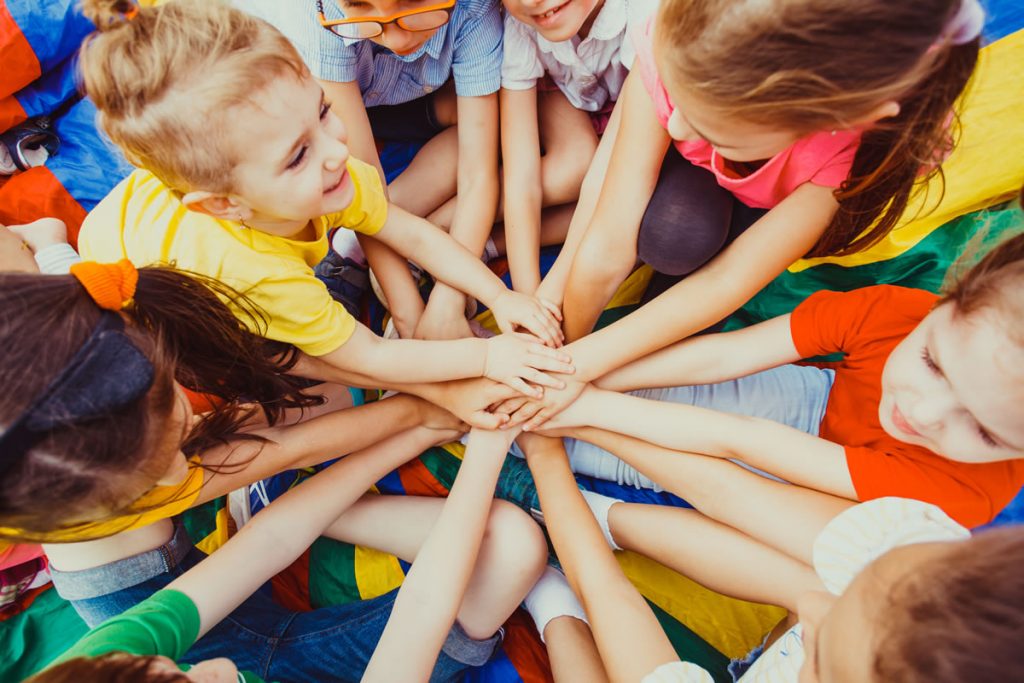Cooperative learning is a methodology that pursues a socio-affective purpose, reaching a goal in a cooperative group . For its effectiveness in the classroom, it is necessary for the teacher to understand what it is about, what is the difference with respect to other methodologies, such as collaborative learning or competitive learning, and to find strategies to put it into practice in the classroom.
Next, let’s see what cooperative learning is and how you can put it into practice .

What is cooperative learning and how it differs from others
Cooperative learning has a socio-affective goal, in which it seeks to integrate a group to cooperate in the search for common results. However, it is not about the teacher assigning a job to be done in groups of two or three people, but it is also necessary for the teacher to teach how to achieve a goal by cooperating . If students are simply assigned individual roles and tasks, which are then integrated into the work, they are actually doing individualistic work and not cooperative work. Why? Because cooperative work requires group interaction to achieve results.
The objectives that are pursued in a cooperation are both individual learning and the learning of all members of the group equally, so it cannot be disconnected from the learning of others. Traditional formal education is more familiar with competitive learning, where each student competes for the highest grade. However, many schools and teaching programs already favor this type of learning more , so the teacher’s work focuses on finding strategies to make changes in the classroom that favor cooperative work, even if it is in small dimensions.
Regarding collaborative learning, it differs from cooperative learning mainly in the objective pursued and in the role of the teacher. In collaborative learning the objective is cognitive, it seeks to build new knowledge from the knowledge of the group . The teacher acts more as a facilitator in these cases, and becomes one more student who builds knowledge.
In addition, we can distinguish cooperative learning from other types of learning or strategies with these five indicators:
- Positive interdependence: it is when students perceive that they “either sink or swim together”. This can be achieved through mutual goals, division of labor, division of materials, roles, and making part of each student’s grade depend on the performance of the rest of the group.
- Small Group and Interpersonal Social Skills: In cooperative learning groups students learn academic subjects as well as interpersonal and small group skills. As students develop these skills, later group projects will likely run more smoothly and efficiently than the first ones.
- Face-to-face interaction: Important cognitive activities and interpersonal dynamics only occur when students promote the learning of others. This includes oral explanations of how to solve problems, discuss the nature of concepts learned, and connect present learning with past knowledge.
- Individual responsibility: the essence of individual responsibility in cooperative learning is that “students learn together, but perform alone.” This is important to ensure that no one does the work of others.
- Group analysis: After completing the task, students should have time and procedures to analyze what they have done, how and how to improve as a team.

Strategies to implement cooperative learning in the classroom
- Training in cooperative learning is necessary, because many teachers were students in a system in which competitive learning predominated, so you have to unlearn to learn new things.
- Start with small cooperative tasks in the classroom, where the teacher can observe the cooperation and train the students .
- Choose any topic and structure it so that it is done cooperatively, implement it and test results.
- Incorporate cooperative learning in 60% of classroom activities, so that students become familiar with the method.
- Becoming a researcher of cooperative learning, that is: designing strategies, implementing them, observing results and disseminating the experience with colleagues, in a blog, in refereed articles, etc.
- Apply the principles of cooperation outside the classroom, with colleagues, in the institution and in one’s life.











































































































